UCL's Digitisation Suite is a facility for teaching and research, coordinated by UCLDH. It hosts a range of cameras, scanners and other equipment. It is co-located with UCL Special Collections, one of the foremost university collections of manuscripts, archives and rare books in the UK. We have worked together on a number of projects, testing new advanced imaging techniques on real historical objects and using imaging to answer questions posed by librarians and conservators in Special Collections.
This sheet of medieval music unexpectedly turned out to have been written over another piece of music that was revealed in one of the first tests of our new multispectral imaging system.The text of the music that appeared under multispectral illumination has been tentatively identified as "Libera Me", a Catholic prayer.
UCL acquired a collection of 157 fragments of medieval manuscripts, collected in the early 20th century by Prof Robert Priebsch to be used to teach palaeography. They include examples of musical, religious and legal works mainly from the 10th-14th centuries in different European languages. Many were used as book bindings and have suffered a range of different types of damage. We obtained funding to fund a researcher to examine the collection and carry out some initial imaging studies. The work was presented at the Digital Humanities 2015 conference.
Euclid's Elements was a maths textbook that defined mathematics for 2000 years. Early printers didn't have the technical ability to print mathematical diagrams until Erhardt Ratdolt worked out a method and published the first printed edition in 1482. Special Collections have a copy and were keen to find out whether imaging the depressions in the surface of the paper would give any clues as to how Ratdolt solved the problem. We chose to use optical coherence tomography, an imaging technique more usually used to image the retina.
This 18th century French book opens to reveal an abacus that is made up of beads on metal wires.We used a microscope to examine the beads to find out what they were made of, and used photogrammetry to generate an interactive 3D model of the book.
Special collections holds a 6 m long genealogical roll (Ms. Angl. 3) that traces the ancestry of Edward IV back to Adam and Eve. Charlie Willard, a SEAHA PhD student, imaged this using a hyperspectral imaging camera that he mounted on a frame that he build. He presented the work at a Gordon Conference in 2018.
Andreas Vesalius was a 16th century anatomist who wrote De humani corporis fabrica (On the fabric of the human body).Its remarkable illustrations include some pages with pop-up figures with instructions to the owner explaining how to assemble them. We used a laparoscope, intended for foetal surgery, to image underneath these pop-ups.
Cerys Jones, a SEAHA PhD student, used multispectral imaging to recover text on the binding of a 17th century book called Exoticorum libri decem (or ‘Ten books of exotic life forms’) and discovered writing that was illegible to the naked eye.
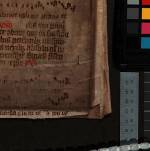
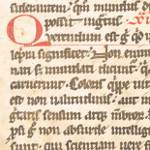
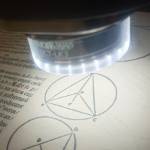
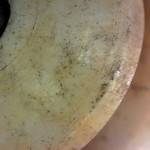
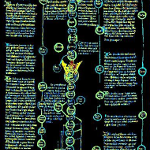
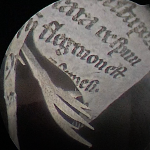
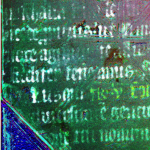
 Close
Close


